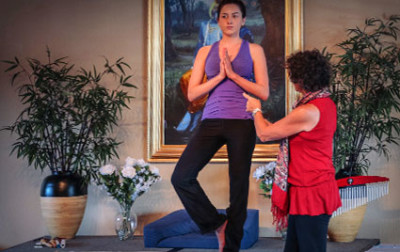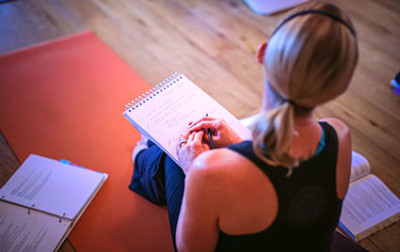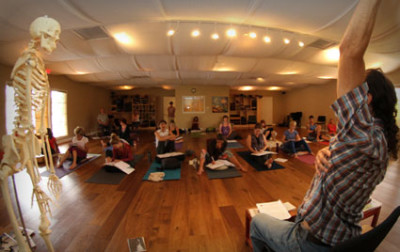The Soul Institute
Ignite your passion for yoga and embark on a transformative journey with The Soul Institute, where exceptional yoga education awaits you. Prepare to delve into a curriculum that merges ancient wisdom, cutting-edge science, and spiritual guidance, delivered by renowned instructors revered worldwide. Immerse yourself in a truly unparalleled experience at The Soul Institute, a registered Yoga School (RYS) accredited by Yoga Alliance, and graduate with an authentic yoga teacher certification rooted in the essence of yogic traditions.
Areas of Study in Yoga Teacher Training
Craft Your Personal Yoga Teacher Training Journey
Our unique yoga training pathway offers a customizable curriculum at every stage of certification. Begin your yoga teacher training (YTT) with our 200 Hour Yoga Teacher Training, specializing in Yin, Gentle, Vinyasa, or Kundalini yoga. Progress to the 500-hour level, where you can choose 300 hours of electives tailored to your interests. Conclude your journey with Yoga Therapy Training and an independent research project.
In addition to this pathway, we have an exceptional Sound Institute providing education and certification in Crystal Bowl Sound Healing.
This unparalleled combination of classes, electives, and world-renowned teachers sets us apart from any other yoga training school. Come and immerse yourself in an extraordinary experience that will forever transform your yoga practice.
200 Hour Training
Attain your 200 Hour Yoga Teacher Training Certification through our RYS Yoga Alliance-accredited program. This comprehensive training transcends the mere ability to teach a yoga class; it imparts unparalleled wisdom that allows you to embody and share the true teachings of yoga. Choose your specialized path and dedicate 50 hours to Gentle, Yin, or Vinyasa yoga studies.
200 Hour Kundalini Training
Our permissions-oriented 200 Hour Kundalini Teacher Training emphasizes traditional Kundalini Yoga infused with the power of mantra and breathwork; personal growth and intuition; and meaningful connection — all within the context of somatically-informed, modifications-friendly, gender and all bodies inclusivity: We believe Kundalini Yoga is for everyone.
300 Hour Training
Take your yoga journey to new heights with our 300 Hour Yoga Teacher Training. Unparalleled in its flexibility, this program allows you to select your own electives for a full half of the training. Embrace the opportunity to explore and deepen your understanding of various yogic disciplines, developing your unique style that will resonate with your future students. This 300 Hour Yoga Teacher Training acts as a crucial stepping stone on your path to achieving a 500-hour certification.
Yoga Therapy Training
Elevate your practice and become a certified Yoga Therapist through our RYS Yoga Alliance-accredited program. As one of only 25 IAYT Accredited Yoga Therapy programs worldwide, our training equips you to work as a respected member of any integrated healthcare team. Through our unique course offerings, you’ll develop your specialty and establish essential connections to integrate your yoga therapy certification into your professional career.
Sound Healing Certifications
Unlock the transformative power of sound within yourself through our Sound Healing Certifications. The Soul of Yoga Sound Institute brings together master teachers and experts in the field of sound healing to guide you on a profound journey of self-discovery and connection. Immerse yourself in the art and science of sound as a healing modality, gaining the skills to facilitate transformative experiences in any healing arts space or professional practice.
Masters Degree with concentration in Yoga Therapy
Earn a Masters Degree in Integral Health while becoming a credentialed Yoga Therapist.
This one of a kind program is a comprehensive, three-dimensional study of the whole being – mind, body, spirit – utilizing the tools of yoga and holistic healing, including asana, meditation, pranayama, chanting, mudra, spiritual psychology and counseling, and lifestyle suggestions from an integrative and holistic perspective.
Reviews From Past Yoga Teacher Trainees
I was lucky to have chosen such a fantastic immersive experience with just the right amount of time between modules to assimilate and integrate. The teachers are highly knowledgeable and heart centered, the schedule was well balanced, incorporating everything one needs to know to be not just a kundalini teacher but an awesome one! I definitely felt more connected to my heart and soul after the training and am able to experience a deeper connection with others as a result!
Soul of Yoga Institute has a wide variety of highly interesting courses in all veins of yoga for personal and professional growth. The world class quality of instructors continue to impress me with each course I take. Diving deeper into Anatomy, Sequencing, Yoga Therapy for all populations (heart disease, autoimmune disease, trauma informed yoga…,) as well as philosophy, Ayurveda, and continuous opportunity for reflection and growth on a soul level has exceeded my expectations. All staff (Directors and support) are inspiring and helpful in curating a comprehensive yoga training course of study. I am grateful for The Soul of Yoga. My teaching and interior world has expanded.
Teacher training at the Soul of Yoga changed my life. It was not only an experience of asana, philosophy and spirituality, but a beautiful exploration of bonding and community with my fellow course mates. I would recommend it to anyone as an exercise in growth and leadership, regardless of their desire to teach yoga.
Wonderful community of dedicated & inspiring faculty and supportive & engaged students, and an administrative staff (Mo, Shanny, and student assistants) who “rock” it with style & passion again and again. Love that the two 10-day foundational courses (Soul of Wellness and Soul of Life) are also the foundational courses for the IAYT certified yoga therapy program, and that students can and are encouraged to repeat these courses to deepen their learning at no additional charge. Appreciate artful seamless offering of multiple options for in-person, synchronous (zoom) & asynchronous (recordings) learning.
The Soul of Yoga is MAGICAL. I came looking to start a new career path in yoga and ended up opening the door to a profound path on which I am seeking my true self. It is more than just a yoga teacher training; it’s a window into your soul and a first step toward living your dharma.
Financial Aid For Yoga Teacher Training
We understand that pursuing your dreams shouldn’t be hindered by financial constraints. That’s why The Soul Institute is dedicated to supporting motivated individuals by offering various discounts and financial rewards to qualifying students. As an approved provider of MyCAA, we also provide guidance and assistance in navigating the MyCAA scholarship process for military spouses. Additionally, we offer customized payment plans, ensuring that financial considerations do not hinder your journey towards becoming a certified yoga instructor. Explore the information below and feel free to reach out to us with any questions as you navigate the application process.
Military Financing Available
MyCAA Funding gives eligible military spouses the opportunity to train for portable jobs in growing career fields, including becoming a Yoga Teacher. Soul of Yoga Institute is MYCAA approved. Click below for more information about MyCAA or email shannon@soulofyoga.com.
Begin Your Yoga Instructor Certification (YTT) at The World Renowned Soul Institute Today
Start your journey towards becoming a certified Yoga Instructor at The Soul Institute, a world-renowned institution revered for its unwavering commitment to excellence. Seize the opportunity to enroll in our esteemed Yoga Teacher Training (YTT) program today and witness the transformative power it holds. Prepare to learn from extraordinary yoga teachers, renowned both locally and globally, who seamlessly integrate the timeless wisdom of traditional yogic teachings with the latest advancements in scientific research and profound spiritual guidance. Experience the undeniable difference that The Soul Institute, a Registered Yoga School (RYS) accredited by Yoga Alliance, can make in your path to becoming a certified yoga instructor. Embrace this unique opportunity to graduate as a yoga certified instructor, equipped with the knowledge, skills, and passion to share the art of yoga with your community of students. Enroll today and embark on an extraordinary journey of personal growth and professional fulfillment at The Soul Institute.
Yoga Teacher Training Faculty:
One of the invaluable treasures at The Soul Institute is our celebrated faculty, comprising highly acclaimed and world-renowned Master Teachers. Each instructor brings a unique blend of educational expertise and experiential teachings, creating a dynamic and enriching learning environment for every student. Immerse yourself in a diverse range of teachings, ensuring a well-rounded and comprehensive yoga education that will leave a lasting impact on your personal and professional journey.
Leslie Kaminoff is a Yoga educator inspired by the tradition of T.K.V. Desikachar. He is an internationally recognized specialist with 36 years of experience in the fields of Yoga, breath anatomy, and bodywork. He has led workshops for many of the leading Yoga associations, schools, and training programs in America. Leslie is the founder of the Yoga blog, “e-Sutra,” and “The Breathing Project,” a New York City Yoga studio dedicated to the teaching of individualized, breath-centered Yoga. Leslie teaches The Breathing Project’s unique yearlong course in Yoga anatomy, and is the co-author with Amy Matthews of the bestselling book, “Yoga Anatomy” published by Human Kinetics.
Teacher in: 300 Hour Advanced and Yoga Therapy Trainings

Indu has been sharing about Yoga philosophy, Yoga Therapy and Ayurveda since 1999, and has inspired by and taught under Kriya Yoga, Himalayan Yoga, Kashmir Shivaism and Sivananda Yoga lineages. She has studied both Yoga and Ayurveda in a traditional Guru paramapara setting.
Her teaching style is rooted in empowering and inspiring students to awaken the inner Guru. Her core philosophy is, ‘Nothing has the greatest power to heal, but Self!”
Teacher in: 300 Hour Advanced and Yoga Therapy Trainings
 Nischala Joy Devi is a master teacher and healer. For over 30 years she has been highly respected as an international advocate for her innovative way of expressing Yoga and its subtle uses for spiritual growth and complete healing. She was a monastic student of the world renowned Yogiraj Sri Swami Satchidananda and offered her expertise in developing the yoga portion of The Dean Ornish Program for Reversing Heart Disease and the Commonweal Cancer Help Program.
Nischala Joy Devi is a master teacher and healer. For over 30 years she has been highly respected as an international advocate for her innovative way of expressing Yoga and its subtle uses for spiritual growth and complete healing. She was a monastic student of the world renowned Yogiraj Sri Swami Satchidananda and offered her expertise in developing the yoga portion of The Dean Ornish Program for Reversing Heart Disease and the Commonweal Cancer Help Program.
With her knowledge of yoga and her experience in assisting those with life-threatening diseases, she created The Healing Path of Yoga, and the “Abundant Well-Being Series” CD’s. Yoga of the Heart, a training and certification program for Yoga teachers and health professionals designed to adapt Yoga practices to the special needs of that population.
Nischala Devi is now directing her energies to bringing the feminine heart perspective back into spirituality and the scriptures in her new book, The Secret Power of Yoga, a woman’s guide to the heart and spirit of the Yoga Sutras and The Secret Power of Yoga audiobook (Nautilus Book Award Winner)
Teacher in: 300 Hour Advanced and Yoga Therapy Trainings
 Durga Leela BA, CAS, PKS, Yoga Acharya is the founder of Yoga of Recovery. She is a Certified Yoga Teacher E-RYT 500 through the Sivananda lineage and extensively trained in Meditation and Vedanta. A Clinical Ayurvedic and Panchakarma Specialist, Durga trained both in the US and India and has served as the Director of the Ayurveda Programs at the Yoga Farm in California since 2003. She is a professional member and speaker for the National Ayurvedic Medical Association (NAMA) and the International Association of Yoga Therapists (IAYT), also a member of Yoga Alliance. Durga has worked on her own path of recovery and has been a grateful member of 12 step fellowship for over 14 years.
Durga Leela BA, CAS, PKS, Yoga Acharya is the founder of Yoga of Recovery. She is a Certified Yoga Teacher E-RYT 500 through the Sivananda lineage and extensively trained in Meditation and Vedanta. A Clinical Ayurvedic and Panchakarma Specialist, Durga trained both in the US and India and has served as the Director of the Ayurveda Programs at the Yoga Farm in California since 2003. She is a professional member and speaker for the National Ayurvedic Medical Association (NAMA) and the International Association of Yoga Therapists (IAYT), also a member of Yoga Alliance. Durga has worked on her own path of recovery and has been a grateful member of 12 step fellowship for over 14 years.
Teacher in: 300 Hour Advanced and Yoga Therapy Trainings
 Monique Lonner, E-RYT 500, C-IAYT is the Director and Program Mentor of Soul of Yoga Institute Advanced Yoga Teacher Training and Yoga Therapy Training Programs. A Yoga teacher for 20 years, she studied in India, New York and California with Master teachers and spiritual sages including, most notably, the teaching faculty of the Soul of Yoga Institute Advanced Program. Monique has developed the Advanced Teacher Training and Yoga Therapy Program for Soul of Yoga, bringing together those who are considered to be the best of the best Master yoga teachers in the world today. A devoted spiritual seeker, as well as an experienced anatomy and physiology teacher she has created a comprehensive program which balances the study of Yoga Therapy technique with the insight and wisdom of Yogic and metaphysical philosophy.
Monique Lonner, E-RYT 500, C-IAYT is the Director and Program Mentor of Soul of Yoga Institute Advanced Yoga Teacher Training and Yoga Therapy Training Programs. A Yoga teacher for 20 years, she studied in India, New York and California with Master teachers and spiritual sages including, most notably, the teaching faculty of the Soul of Yoga Institute Advanced Program. Monique has developed the Advanced Teacher Training and Yoga Therapy Program for Soul of Yoga, bringing together those who are considered to be the best of the best Master yoga teachers in the world today. A devoted spiritual seeker, as well as an experienced anatomy and physiology teacher she has created a comprehensive program which balances the study of Yoga Therapy technique with the insight and wisdom of Yogic and metaphysical philosophy.
Teacher in: 200 Hour, 300 Hour Advanced and Yoga Therapy Trainings
Richard C. Miller, PhD is a clinical psychologist, author, researcher, yogic scholar and spiritual teacher. For over 40 years, Richard Miller has devoted his life and work to integrating the nondual wisdom teachings of Yoga, Tantra, Advaita, Taoism and Buddhism with Western psychology. Among his mentors were Jean Klein, T.K.V. Desikachar and Stephen Chang.
Richard is the founding president and CEO of the Integrative Restoration Institute, co-founder of The International Association of Yoga Therapy and founding editor of the professional Journal of IAYT. He is also a founding member and past president of the Institute for Spirituality and Psychology and a senior advisor for the Baumann Foundation for the study of Awareness and its impact on well-being.
Author of Yoga Nidra: The Meditative Heart of Yoga, Richard serves as a research consultant studying the iRest Yoga Nidra protocol that he has developed (Integrative Restoration ~ iRest, a modern adaptation of the ancient nondual meditation practice of Yoga Nidra) researching its efficacy on health, healing and well-being with diverse populations including active-duty soldiers, veterans, college students, children, seniors, the homeless, the incarcerated, and people experiencing issues such as sleep disorders, PTSD, chemical dependency, chronic pain, and related disorders.
Teacher in: 200 Hour, 300 Hour Advanced and Yoga Therapy Trainings
 Flossie Park, E-RYT 500 YACEP Always considering herself as a student of life, Flossie has dedicated her life to empowering herself and others through yoga, meditation, workshops, retreats, Sound Therapy and numerous other modalities for over 25 years. One of Flossie’s passions is to support people wherever they are on their life’s journey. With a down to earth approach, she draws from a lifetime of spiritual studies from many sources both from the eastern and western traditions. Applying the wisdom teachings to everyday living, she helps people to see their life from a higher perspective, gleaning understanding, enjoying the process and creating consciously. One of her strongest passions is supporting women, especially during pregnancy. This is a true opportunity for women to recognize their innate power learning to trust their bodies and intuition.
Flossie Park, E-RYT 500 YACEP Always considering herself as a student of life, Flossie has dedicated her life to empowering herself and others through yoga, meditation, workshops, retreats, Sound Therapy and numerous other modalities for over 25 years. One of Flossie’s passions is to support people wherever they are on their life’s journey. With a down to earth approach, she draws from a lifetime of spiritual studies from many sources both from the eastern and western traditions. Applying the wisdom teachings to everyday living, she helps people to see their life from a higher perspective, gleaning understanding, enjoying the process and creating consciously. One of her strongest passions is supporting women, especially during pregnancy. This is a true opportunity for women to recognize their innate power learning to trust their bodies and intuition.
Teacher in: 200 Hour, 300 Hour Advanced and Yoga Therapy Trainings

Joe has been practicing and teaching many forms of yoga for 20 years. For 10 years, he has been traveling nationally and internationally offering lectures, workshops and teacher trainings on specifically Yin Yoga and Chakra Meditation. Joe is a senior student and primary teaching assistant of Paul Grilley, a true Yoga Scientist and founder of Yin Yoga. After several years of apprenticing under Paul, Joe began roaming the globe to spread the word of his teacher’s work. “Joe Barnett has been our friend and assistant for many years. He has two qualities that make him an excellent presenter: he knows the anatomical principles and he relates to people in a sympathetic manner. His presentations are unhurried, hands on demonstrations, this is the easiest way to absorb these ideas.” ~ Paul and Suzee Grilley
Teacher in: 200 Hour Yoga Teacher Training, 300 Hour Advanced
Dana Reece, Ph.D., E-RYT 500, YACEP, Director of Kundalini Studies, is a Kundalini Yoga Facilitator; Kundalini Yoga Teacher Trainer; Trauma-Sensitive Regression Practitioner in private practice; Yoga Therapist in training; and college professor.
Dr. Reece has 30 years’ teaching experience and 20 years’ experience in meditation and the practice of inner alchemical and yogic techniques designed to develop and strengthen the energetic body and enhance intuition. Yogic areas of expertise include Death and Shadow work; Conscious Communication Techniques; Strategies for Deepening Intuition; and Sankalpa (“resolve” or “resolution”): the yogic method of setting goals or aspirations. She has completed leadership training with several masters of personal development, including Peter Drucker, Charles Givens, and Anthony Robbins. In addition to having taught hundreds of college classes as a college professor and Kundalini Yoga instructor, she has led and facilitated dozens of group meditations and workshops.
Dana Reece’s experience in these modalities combines compassion, humor, and heart-centered determination to move clients and students through self-imposed fears and limitations toward clarity and confidence to achieve their highest potential.
Teacher in: 200 Hour, 300 Hour Advanced and Yoga Therapy Trainings
 Amy Weintraub, MFA, E-RYT 500, C-IAYT, YACEP is the founder of the LifeForce Yoga Healing Institute and has been a pioneer in the field of yoga and mental health for over 20 years. She is the author of Yoga for Depression (Broadway Books) and Yoga Skills for Therapists: Effective Practices for Mood Management (W.W. Norton) and numerous articles and book chapters. Amy is involved in ongoing research on the impact of Yoga on mood. Her evidence-based Yoga protocol for managing mood is used in healthcare settings globally and is featured on a number of audio-visual products, including the LifeForce Yoga series, an award-winning library of evidence-based yoga and meditation CDs and DVDs for mood management. She maintains an archive of news and research on, www.yogafordepression.com.
Amy Weintraub, MFA, E-RYT 500, C-IAYT, YACEP is the founder of the LifeForce Yoga Healing Institute and has been a pioneer in the field of yoga and mental health for over 20 years. She is the author of Yoga for Depression (Broadway Books) and Yoga Skills for Therapists: Effective Practices for Mood Management (W.W. Norton) and numerous articles and book chapters. Amy is involved in ongoing research on the impact of Yoga on mood. Her evidence-based Yoga protocol for managing mood is used in healthcare settings globally and is featured on a number of audio-visual products, including the LifeForce Yoga series, an award-winning library of evidence-based yoga and meditation CDs and DVDs for mood management. She maintains an archive of news and research on, www.yogafordepression.com.
Teacher in: 300 Hour Advanced and Yoga Therapy Trainings
 Joe Barnett, ERYT-500 has been practicing and teaching many forms of yoga for 20 years. For 10 years, he has been traveling nationally and internationally offering lectures, workshops and teacher trainings on specifically Yin Yoga and Chakra Meditation.
Joe Barnett, ERYT-500 has been practicing and teaching many forms of yoga for 20 years. For 10 years, he has been traveling nationally and internationally offering lectures, workshops and teacher trainings on specifically Yin Yoga and Chakra Meditation.
Joe is a senior student and primary teaching assistant of Paul Grilley, a true Yoga Scientist and founder of Yin Yoga. After several years of apprenticing under Paul, Joe began roaming the globe to spread the word of his teacher’s work.
“Joe Barnett has been our friend and assistant for many years. He has two qualities that make him an excellent presenter: he knows the anatomical principles and he relates to people in a sympathetic manner. His presentations are unhurried, hands on demonstrations, this is the easiest way to absorb these ideas.” ~ Paul and Suzee Grille
Teacher in: 200 Hour, 300 Hour Advanced Trainings
 Stacy McCarthy E-RYT 500 YACEP
Stacy McCarthy E-RYT 500 YACEP
An award-winning health & fitness leader, accomplished businesswomen, captivating speaker, and respected educator. For her contributions to the field of health and wellness as a seasoned mindful movement educator and integrative wellness thought leader, Stacy was honored as the 2021 IDEA World Fitness Instructor of the Year, a prestigious award recognizing superior instructional abilities and positive influence within the global health and fitness industry. Stacy’s recognized for her health and wellness coaching, yoga and mindfulness practices, positive psychology interventions, culinary whole food, plant-based medicine in the treatment of various chronic disease and conditions.
Infused with humor and soul, Stacy is a storyteller with a devotion to philosophy. Her classes are physically balanced, energetically empowering, mentally focusing and spiritually up-lifting. They are designed to transform lives. Stacy’s yoga journey began almost three decades ago in the lineage of T. Krishnamacharya. She is known for intelligent sequencing that meets her students where they are in their own practice in a system that inspires beginners and experienced students alike. Her teaching is holistic and embraces periods of time both past and present, as well as the fluctuations of life, including age, seasons, and transitions. At the core of her teachings there is a celebration for the human capacity to expand, love and live more fabulously.
Teacher in: 200 Hour Yoga Teacher Training
Amanda Baird has played an intricate role in encouraging others to utilize the power of Sound as an accessible healing modality. Referred to as the “Midwife of Sound Healing” education, her programs have reached thousands in the past decade. She was inspired to build a sound healing training program while working as a Critical Care/ER/Trauma Registered Nurse. In that role, she saw a great need for increased compassion, self-care and connection for her patients and fellow staff members. While working with hundreds of people in various healing settings like hospice, elementary schools, hospitals, jails, homeless shelters, and more, she witnessed how sound healing could help shift the sad to uplifted, the pained to relieved, the burnt-out to enlivened quickly, easily, and with consistent results. Amanda has worked with world renowned Sound Healers, Nurses, and Music Therapists and continues to lead the way for the future in wellness and medicine. Amanda is the co-creator and visionary for Sacred Sound of the Soul temples, located in Encinitas, Ca and Sedona, AZ and she is the Director/Founder of the Soul of Yoga Sound Institute.
Teacher in: 200 Hour Yoga Teacher Training and Sound Institute














